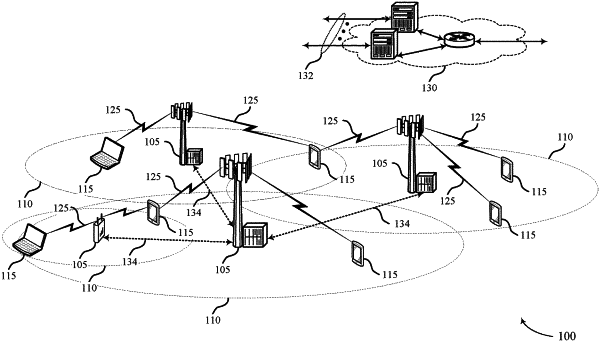| CPC H04W 52/346 (2013.01) [H04W 52/146 (2013.01); H04W 76/16 (2018.02); H04W 88/06 (2013.01)] | 25 Claims |

|
1. An apparatus for wireless communications at a user equipment (UE), comprising:
a processor;
memory coupled with the processor; and
instructions stored in the memory and executable by the processor to cause the apparatus to:
determine a first transmission power for first uplink communications between the UE and a first cell group associated with a first radio access technology (RAT);
determine a second transmission power for second uplink communications between the UE and a second cell group associated with a second RAT, wherein the first uplink communications overlap in time with the second uplink communications;
reduce the second transmission power of the second uplink communications to a third transmission power when a summation of the first transmission power and the second transmission power is greater than a power threshold, wherein reducing the second transmission power is based at least in part on the overlap in time and on a capability of the UE to perform dynamic power sharing between the first RAT and the second RAT, and wherein a summation of the first transmission power and the third transmission power is less than or equal to the power threshold; and
perform one or both of the first uplink communications or the second uplink communications based at least in part on reducing the second transmission power, wherein performing one or both of the first uplink communications or the second uplink communications comprises dropping the second uplink communications when a difference between the second transmission power and the third transmission power is greater than a threshold value.
|